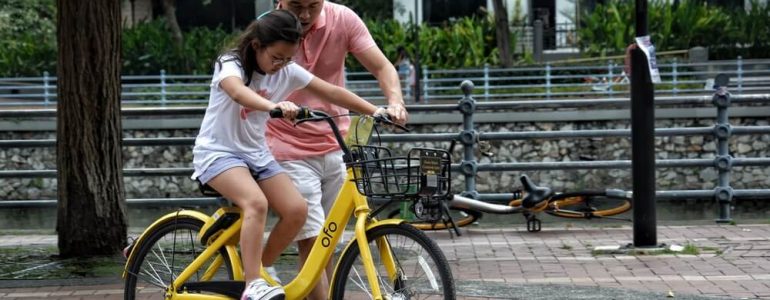Younger kids (4-6 years) have a surprisingly easy time learning how to ride a bike. You can teach them in less than an hour.
This is especially the case if they’ve been riding a bike with stabilisers or a balance bike.
For older kids, things are a bit different and more challenging.
They tend to be more fearful if this is their first time riding a bike. They also don’t have the luxury of learning on a balance bike and most may not want to be seen with a bike that has training wheels.
But it’s not that hard to teach an older child to ride a bike. You just have to be more patient and use the right techniques.
Here are some tips that can help.
1. Get the right sized bike
This is essential. If the bike is too big and too heavy, they are never going to learn. Here, for example, are good sized bikes for 10 year and 11 year old.
One reason I strongly emphasize the right size is that they will start by scooting along the ground. So they need to be able to plant their feet on the ground when on the bike.
Check that the wheel or frame size is the right one for their height. Most manufacturers will state what height and age a bike is ideal for.
One advantage of buying the right size is that it will also be the right weight. If the bike is too heavy, they’l have difficulty learning to balance and steer.
Even if you have the right sized bike, make sure it is perfectly adjusted to their height. Raise or lower the saddle until they are comfortable seated with their feet on the ground on either side.
2. Start with balancing
Balancing is how you stay on the bike. For people who know how to ride, it comes naturally. For a child learning to ride, it’s a huge challenge partly because they are nervous.
So we’ll start with balancing. With that out of the way, pedalling and steering comes easy.
Select a flat area with no corners or curves. An empty parking lot is perfect.
Have them sit on the bike and push along the ground with their feet. You may need to temporarily remove the pedals to avoid them getting in the way.
They should try to lift their feet off the ground for short distances at a time.
After a few runs, they’ll find they can go further without having to put their feet on the ground. Practice until they learn how to balance.
3. Practice corners
Before you put the pedals back on, practice some cornering. They need to learn how to maintain balance while going around a corner.
Have them turn in wide circles and move in a zigzag.
4. Pedalling
Next, they need to learn about power and control.
Ask them to pedal slowly while also maintaining balance. They should then pick up a bit of speed.
Note: By now, you should have taught them how to use brakes. They need to be able to slow down or stop if they feel they are going too fast.
5. Practice everything
Once they can ride at a moderate speed without falling or veering side to side, they are ready for more challenges.
Combine all the lessons into one. You can set up obstacles that they need to go round.
This will help them practice balancing, steering, cornering and overall control. Again, a flat open area is the best for this.
Once they have had some practice, you can move on to cycling paths and tracks where they can learn riding in a more challenging environment.
If they have a geared bike, this is also the time to introduce the concept of shifting gears to make it easier to go uphill and downhill.
6. It may take several days
All the above will likely not happen in a day.
To avoid frustrating them and potentially discouraging them from learning to ride, stagger your practice sessions over several days.
You can focus on a specific area each day such as balancing, cornering, pedalling and so on.
All through, keep encouraging them even when they fall or seem to be taking long to master something.
In no time, your child will be a natural rider.





Cheers for a great article. My grandson is 10 years old and 5 foot 5 inches tall. Tried to teach him using an American method but no joy. Down to 2 thing’s I never really considered which you covered… bike weight and removing pedals. Thanks again for a very helpful article